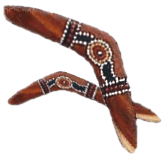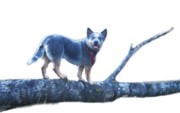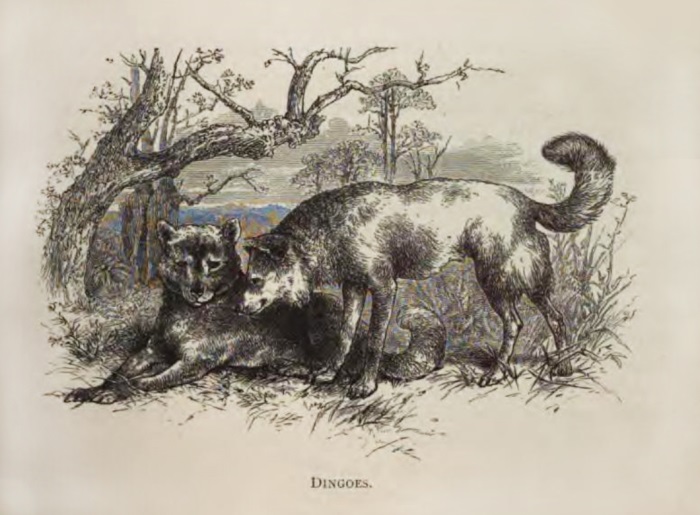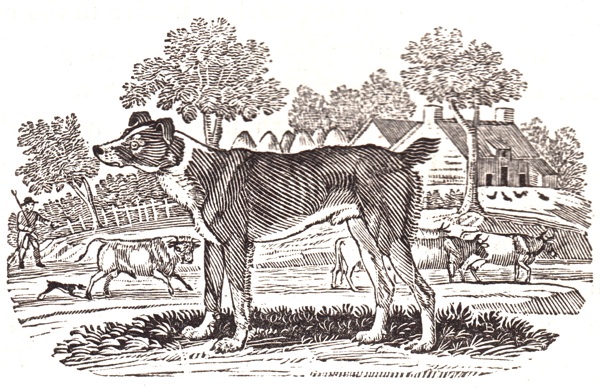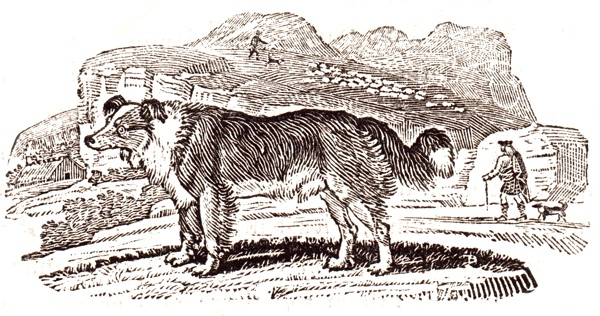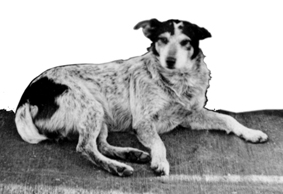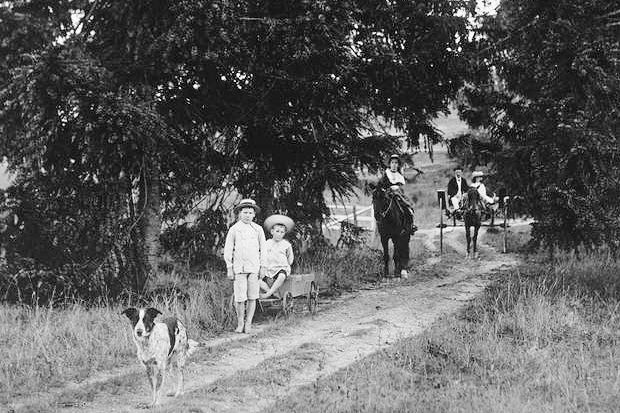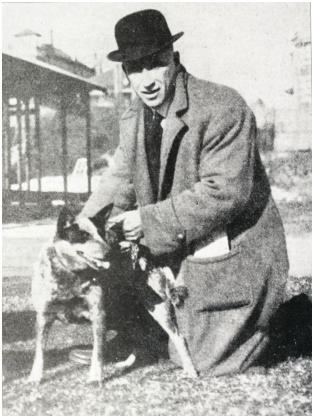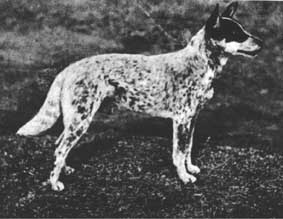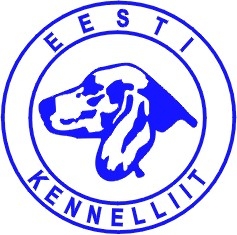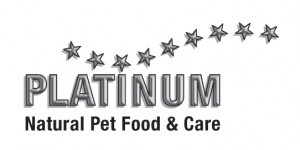History | Standard | Health
HISTORY
First experiments
First settlers arrived in Sydney on Australia's east coast on January 26, 1788. And together with cattle the working dogs were brought to Australia.The most popular herding dog at the time was the Smithfield, called due to the place were these dogs were working, the Smithfield Meat Markets in London that were the most important trading centres for meat stock those days. These dogs were used to do their job on stockyards and in slaughterhouses in England. They were big, black, freguently bobtailed* dogs with a long, rough coats. They had square bodie shape, with flat, wedge shaped heads, and saddle flap ears.
Smithfield |
Black in colour, with white markings around the neck extending down the front. They were faithful, hardy and sensible, but had an awkward cumbersome gait, were slow on their feet, unable to cope with the heat, severe biters and barked too much. In 1813 as the colony opened up and the herds increased. The Smithfield dogs were overwhelmed by the outback's difficult terrain, its huge, unfenced areas, and domestic cattle, who were turned into half-wild creatures. And the Smithfield's constant barking kept the drovers' horses and cattle in constant agitation, which made the cattle run off their condition. So the cattlemen set about developing a dog intelligent, rugged and courageous enough to meet the new job description.
In about 1830 a drover named Timmins had an idea of crossing his Smithfields with the red native dog Dingo. The offspring "Timmins Biters" as they were commonly called, were red bob-tailed very active and almost silent dogs. Unfortunately they were quite a biters and could not be left alone with calves. After a time, most of them died out.
Next the rough haired collie was bred with dingo. They were also a failure, as they tried to work the cattle as if they were sheep, rushing to the head and barking. This action made the cattle wild. A cross of the Rough Collie and Russian Poodle was tried next. A blue, rusty, brown or black dog with a coat like that of an Otterhound. They were very severe dogs, biting anywhere from head to tail, and the long coat made it particularly unsuitable for our harsh summer conditions. They soon died out. Crosses of the Bull Terrier and Collie were tried but they proved to be too slow, too heavy and too severe on the stock.
Crosses of Bull Terrier and Kangaroo Dog (cross between a Greyhound and Wolfhound) were also tried. They were useless for quiet cattle, so they died out too.
The history of Australian Cattle Dog - Hall's heeler
|
Dingo in New Holland, Hamilton Smith 1839 & Dingos pencil drawing 1886 (Link) |
The Hall Family Chronicles reveal that Thomas Hall owned already around 1840 a larger number of outstanding, self-bred dogs he had crossed with dingo. As Robert Kaleski was the only breeder at that time, who had written documentation, a large part of history of Australian Cattle Dog is based on his writings and theories. According to Robert Kaleski, Thomas Hall had imported some smooth-coated blue merle** Scotch or Highland Collies to cross with dingo, but A.J. (Bert) Howard, a Hall family historian, reveals that these dogs were blue coloured Northumberland Drover's Dogs ie Cur Dog (Border Collie lineage), that Thomas Hall had imported and crossed with progeny of dingoes that he had tamed. To distinquist these drover's dogs from the rest of British drovers or cur dogs, Howard geve them the name Northumberland Drover's Dog. The resulting litters becoming known as "Hall's Heelers". The offspring resembled small, sturdily made dingoes in all respects save the colour.
|
Cur dog (note the dog heeling cattle in the background) and old type of englsih shepherd, Thomas Bewicki engravings from 1790 |
The Northumberland Drover's Dog evolved from the Shepherd's Dog of Scotland (forerunner of the Border Collie) crossed with the Old Beardie (sometimes later called the Highland Collie or Bearded Collie) with, most likely, a splash of something else thrown in. The home of this dog was traditionally Northumberland. The Northumberland Drover's Dog is described as a much more aggressive and forceful than the Shepherd's Dog, or Scotch Collie (Rough or Smooth Collie type). Slightly heavier boned than either of these other dogs, lack and white in coat colour, obedient, faithful, and highly intelligent, with a natural ability to heel cattle.
|
Hall's heeler |
Dingoes were normally red-fawn or few that were white or black and tan. They also carried a white tail tip and usually had white feet white. The crossbreds were redspeckled or blue-mottled. The dingo hybrids worked silently, and instead of working at the heads of the cattle, as most sheepdogs do, they worked from the rear, snapping at the heels of cattle when necessary.
These dogs helped Thomas Hall with the long-distance cattle drives from the heart of the country to the stockyards at the coast - dogs that gave Hall a tremendous advantage compared to the other cattle farmers. It was just due to these dogs which soon worked on all the Hall's farms that the Hall family could enlarge their properties and number of cattle during the following years. Consequently, the Hall family became one of the greatest cattle farmer dynasties among Australian farmers of that time.
Hall's heelers were highly esteemed and in great demand by farmers in entire Australia. However, the dogs were exclusively bred on the ground of Hall's property for more than three decades and only passed on to farmers working for the Hall cattle empire. Only after Thomas Hall's death in 1870 and the death of his brother one year later, the Hall's Heelers were available for other farmers and slaughterhouse owners due to the sale by auction of the Hall properties. From 1840 until his death in 1870 Thomas did not find the need to infuse any other bloodlines into his breed.
|
Hall's heeler 1902 |
Tom Bentley owned an excellent working dog from Hall’s strains. Over the next few years Bentley's Dog was widely used at stud to retain the out-standing characteristics. And the white blaze seen on the forehead of all ACDs today (now referred to as a "Bentley Mark") and the black tail-root spot seen occasionally in blue dogs can be directly attributed to Bentley's dog.
Queensland heeler
|
Kaleski and Stanmore Ruby |
This new breed became so popular between the Queensland farmers that that it came to be known as the Queensland heeler or Queensland blue heeler. Sometimes that name is shortened to blue heeler, which is also the nickname for police officers in Australia. Dogs with red coats were called Red heelers.
Robert Kaleski, born in 1877, was the man who made the cattle driving dogs of the Hall family finally internationally known as "Australian Cattle Dog". In 1893 Robert Kaleski drew up a standard of the breed. This standard was adopted by the Kennel Club of New South Wales in 1903. The essence of Kaleski's standard is part of the official standard approved and adopted by the Australian National Kennel Council in 1963. The breed's name became official as the Australian Cattle Dog. The Australian Cattle Dog was formally admitted to the American Kennel Club (AKC) on the 1st of September in 1980 and the Federation Cynologique Internationale (FCI) recognized Australian Cattle Dog on the 15th of Septembril in 1989.
In 1914 Kaleski published a book entitled "Australian Barkers and Biters". In his later writings, however, Kaleski introduced some contradictory and unlikely assertions. With the passage of time, these have been generally accepted. The most enduring of Kaleski's theories relate to alleged early Dalmatian and Kelpie infusions, said to have been introduced by the Bagusts into the early Cattle Dog breed. These infusions are not referred to in Kaleski's writings until the 1920s and there is no evidence that they occurred in the mainstream early development of the Cattle Dog. The alleged Dalmatian and Kelpie infusion was first mentioned in the Australian Encyclopaedia in 1926.
|
Nipper, bred by Harry Bagust 1899 |
In 1935, by which time the Bagusts were long dead, Kaleski re-affirmed both infusions and specifically attributed them to the Bagusts. Allegedly Jack and Harry Bagust bred one of Hall's heelers to a Dalmatian, imported from Great Britain. The offspring from this cross were born pure white. They did not develop coat color, either red or blue-speckled, until they were three weeks old. The infusion of the Dalmatian changed the merle colour to red or blue speckle.
As much as the Dalmatian influence improved the dog's relationship to both horse and man, unfortunately, some of the working ability was lost with this cross, so, the Bagust brothers, after admiring the working ability of the Black and Tan Kelpie allegedly added that breed to their breeding program. The offspring’s blue variety had black eye patches, black ears and the red variety displayed dark red markings in place of the black on an even speckled base.
Speculations around the dogs produced by Fred Davies around 1870 being used in the making of australian cattle dog breed are not confirmed. Davies used bullterrier in his breeding, but allegedly those dogs were gradually left out from the breeding because of a tendency to bite and not let go and also their movement was limited by their stocky bodies.
* Dogs were freguently bobtailed not only because they were geneticly born that way, but also beacuse in United Kingdom a working dog tail tax was collected. To not to pay a tax, a tail needed to be docked. Also that made farmes to prefer naturally bobtailed breeds.
** Most likely the described colour blue merle was actually not genetcly blue merle, and only looked like it. It has been established that the Australian Cattle Dog does not carry the merling gene of the blue merle collie. It carries a ticking gene.
References:
Halls heeler
A DOG CALLED BLUE, Noreen R Clark
HALL'S HEELERS - Origins Of The Cattle Dog in Australia, A.J (Bert) Howard
Old Time Farm Sheperd - Historic articles
Australian Cattle Dog A study of the breed, Narelle Hammond-Robertson
Halls heelers. Kennel Itsozi
The Heeling Power of the Australian Cattle Dog, Rick Beauchamp
